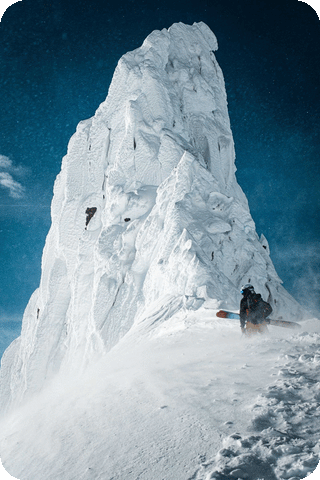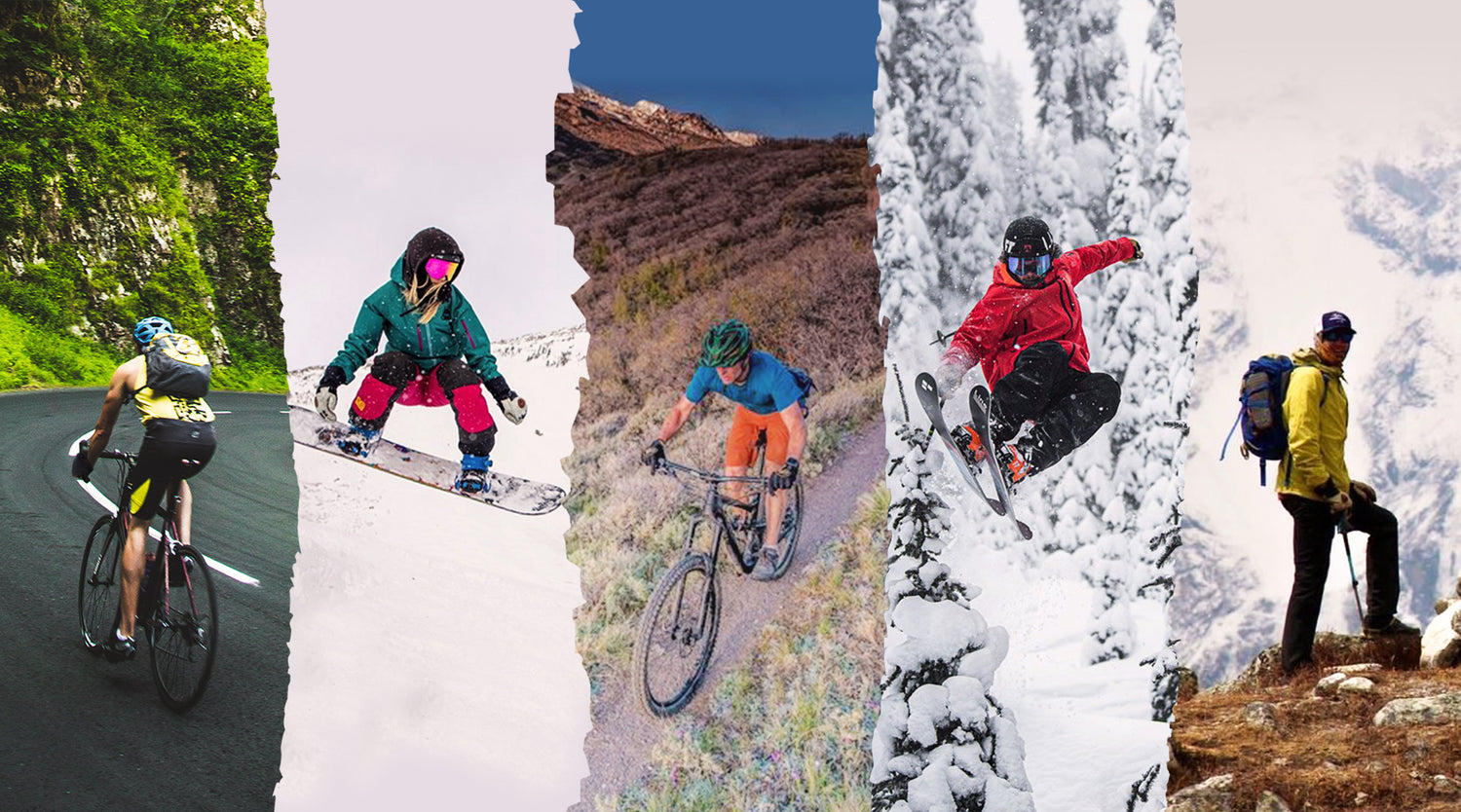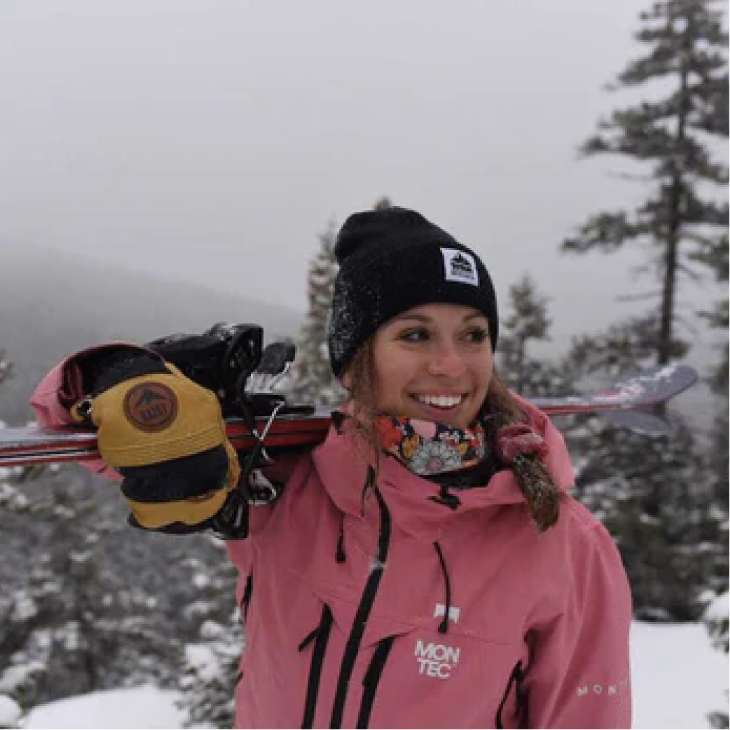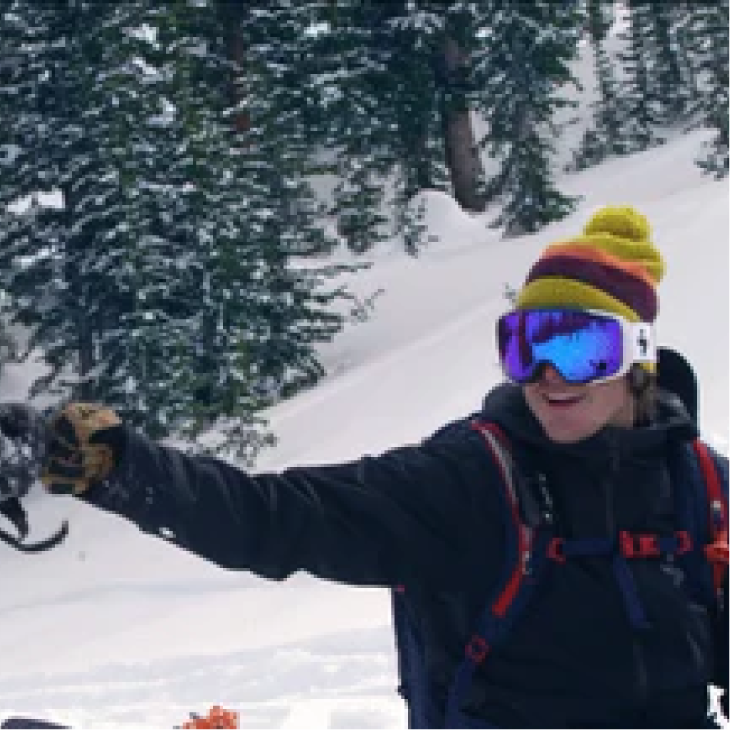BAÏST Ambassador Spotlight

19-year-old BAÏST ambassador Nathan Saier lives by a “damn the torpedoes” ethos, but harbors no disillusion about the risks and rewards of the action sports lifestyle.
By Owen Clarke
From skiing to mountain biking to cliff diving to slacklining to downhill longboarding, Nathan Saier holds an “experience everything” mentality (It’s his bio on Instagram, actually).
The 19-year-old, a sophomore at Montana State, has been skiing for his entire life. Born in the Portland suburbs, Saier’s parents were both ski patrollers, so he was skiing Mt. Hood at a young age, and was surrounded by avid skiers and snowboarders growing up.
A competitive skier in high school (from 2016 to 2020), he was couchbound with a busted hand for much of his senior season (“They told me if I kept pushing it, I’d never use this hand again”). It was then that he took to the camera as an outlet to still experience the sport he loved, saving up all his skiing money and purchasing a Fujifilm X-T4. Now, in addition to pursuing a path as a backcountry freeride skier, he’s become a passionate photographer, and has racked up partnerships with several brands, BAÏST included, in the last two years.
He hasn’t walked an easy line, though. Saier’s list of injuries in his short career read like those of a retired athlete three times his age.From a slipped disc in his neck to a shattered hand (both from skiing) to torn shoulder ligaments while mountain biking to massive road rash from a longboarding wipeout to knocking himself unconscious a whopping three times…

He’s no stranger to the darker side of action sports. In many ways, it’s a miracle Saier still has the balls and motivation to charge as hard as he does, but he’s not naïve about the risks he takes, either.
“For every single thing I’ve done there’s been a negative and a positive,” he said, “and there always will be.” His parents and loved ones are always concerned he’ll take things too far, and there are sports, such as BASE jumping and motorcycle riding, that he has yet to try, simply because of the high level of risk, out of respect for his parents' wishes.
But regardless of the sport he’s practicing, “those risks will always be there,” he said. “If I am ever injured in a serious way, it’ll be a struggle to cope, but I’ll always find a way around it. I’ll join a support group. I’ll keep pushing. I’ll make it work.”
“If the worst did happen, and I ended up paralyzed or something,” he continued, “I guarantee you’d see me out there in a year or two shooting for the Paralympics. I’m never going to give up.”
In his short college tenure, Saier has swapped majors from everything from mechanical engineering to biochem, but he’s currently focused on getting his EMT (Emergency Medical Technician) license, and then becoming a paramedic. This is partially because of his extensive experience dealing with injury, but also because he feels a calling to help others, and that he can bring something unique to the profession. “Growing up around ski patrol I was normalized to injuries,” he said, “but also became aware of the power that people have to affect other people’s situations. One person with the right amount of knowledge and commitment can save someone’s life or make a significant impact in someone’s life.”
Due to his background and extensive list of injuries, he’s developed a certain tolerance for high-stress situations. “When you do as many adrenaline sports as I do you become very normalized to this stuff,” he said. When I'm jumping off a cliff, my head is just as clear as it is at any other time. I want to use this ability to help people. There’s a reason there’s a really high rate of suicide and mental illness in the emergency medical profession, and I have this natural ability to work well under pressure… I’m not averse to injury… all in all, it feels like it’s my responsibility to use that gift to help people.”

Somewhere down the line, it’s one of his biggest dreams, he said, to become a flight medic in the military.
“I grew up on all second-hand gear and it wasn't until I was 16 that I saved up the money to buy a new pair of skis,” he said. “I don't think there's anything wrong with that. So many people get focused on new features or designs that they don't take a look at what they have, and ask if that's enough.”
“If something ain't broke don't go spend a ton of money and create waste to replace it,” he said matter-of-factly. “And the people who are focused on the latest and greatest or replacing their gear every year… They aren't any better or happier than I am, and all that waste is doing a lot of damage to the environment, too.”
This ethos is something that draws him to BAÏST products, in particular. Our gloves are built to last for seasons upon seasons to come. “Every part of the design and element feels like it was designed by somebody on the hill,” he said. “It’s like I was sitting on a hill complaining about a glove, and somebody else was sitting on that hill next to me, listening to me and taking notes on a notepad, and then they went and designed a glove exactly based on those notes.”

“The biggest draw is that these things really last,” Saier added. “I’ve still got the same pair of gloves BAÏST first sent me when I signed on. They’re beat to hell, they’ve got bloodstains and slices. They’re all punched out… But they hold.
“They’re not giving in any time soon.”




Laisser un commentaire
Tous les commentaires sont modérés avant d'être publiés.
Ce site est protégé par hCaptcha, et la Politique de confidentialité et les Conditions de service de hCaptcha s’appliquent.